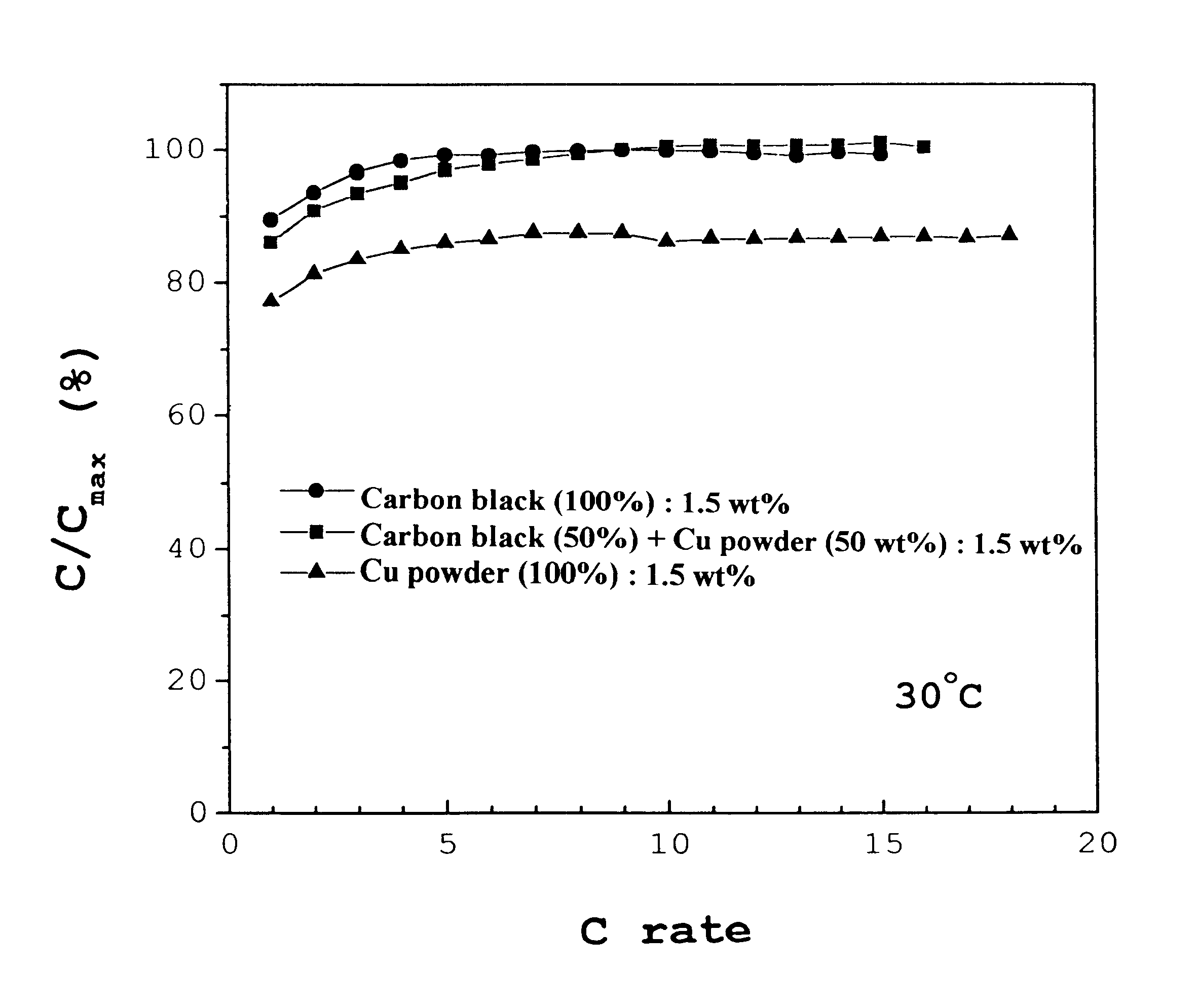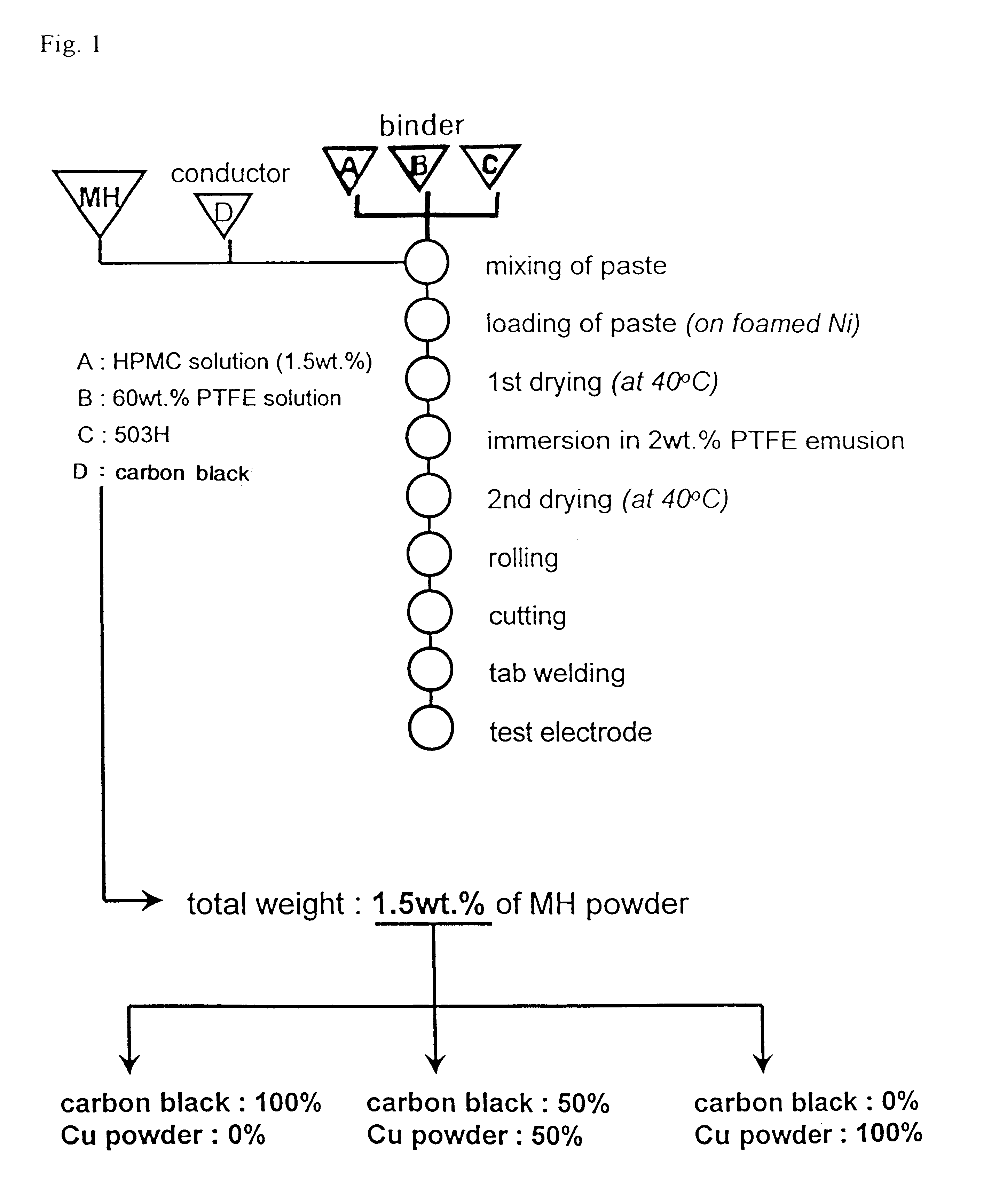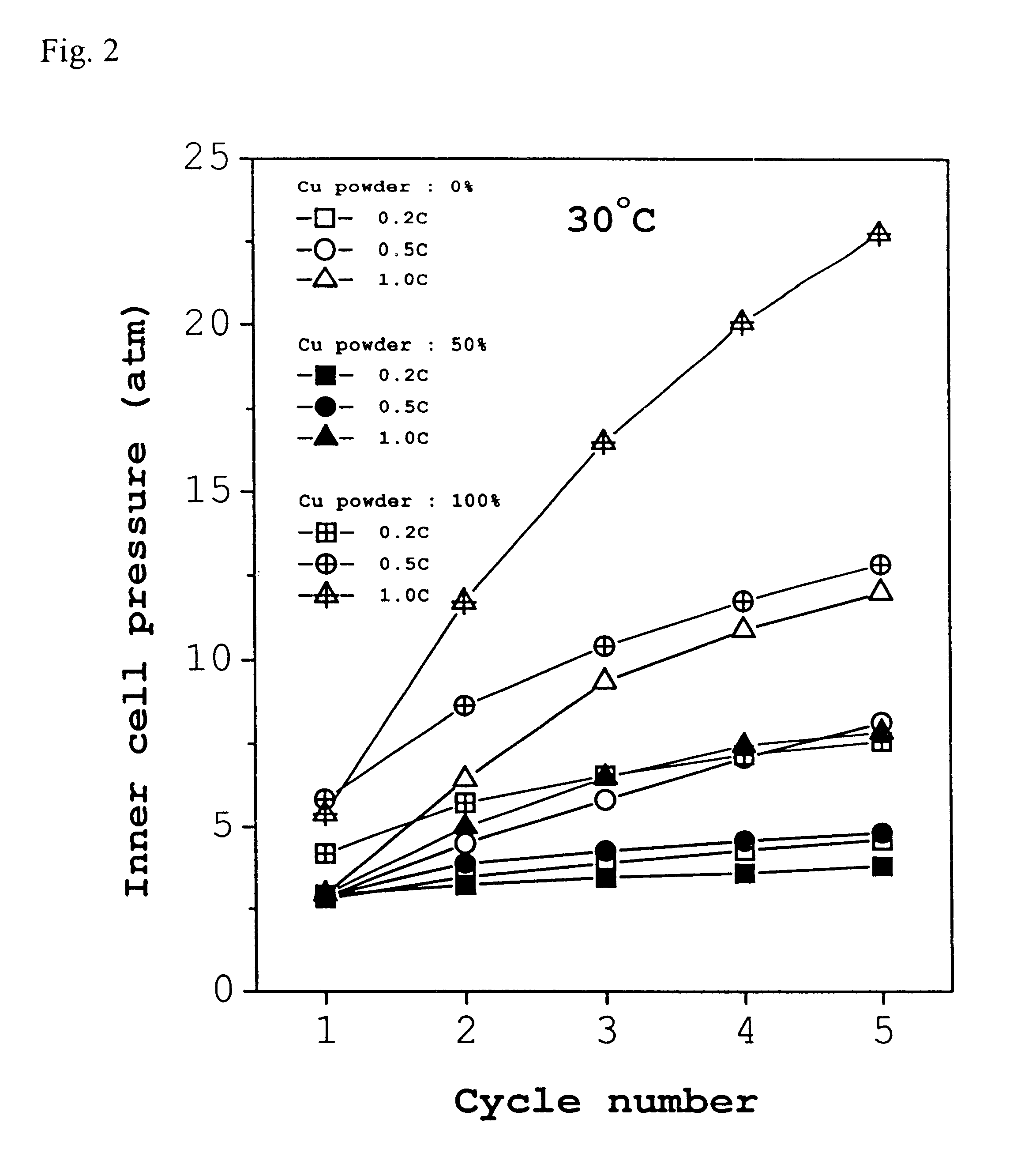Method for preparing electrodes for Ni/Metal hydride secondary cells using Cu
a technology of metal hydride and secondary cells, applied in the field of preparing electrodes for ni/metal hydride, can solve the problems of sakai et al, disadvantages of being complicated, and causing pollution of the environmen
- Summary
- Abstract
- Description
- Claims
- Application Information
AI Technical Summary
Benefits of technology
Problems solved by technology
Method used
Image
Examples
Embodiment Construction
Typically, a cell consists of a negative electrode plate, a positive electrode plate, a separator, and an electrolyte. In order to test the paste type electrode made of a mixture of 50:50 carbon black and Cu powder according to the present invention, it was used as a negative electrode of a cell. A paste-type Ni(OH).sub.2 electrode was used as the positive electrode, a non-woven plate made of grafted propylene as the separator, and a 30 wt % KOH solution as the electrolyte. The cell was designed to have a discharge capacity of 800 mAh while the solution was used at an amount of 2.5-3.0 cc. In this regard, a design of limiting the capacity of the positive electrode was adopted to fix the ratio of negative electrode to positive electrode (n / p ratio) at 1.25. The cell was repetitively charged and discharged at 30.degree. C. The charging was conducted at rates of 0.2 C, and 0.5 C to the charge extent of 120% while the discharging was done down to a potential of 1.0 V at rates of 0.2 C, ...
PUM
 Login to View More
Login to View More Abstract
Description
Claims
Application Information
 Login to View More
Login to View More - R&D
- Intellectual Property
- Life Sciences
- Materials
- Tech Scout
- Unparalleled Data Quality
- Higher Quality Content
- 60% Fewer Hallucinations
Browse by: Latest US Patents, China's latest patents, Technical Efficacy Thesaurus, Application Domain, Technology Topic, Popular Technical Reports.
© 2025 PatSnap. All rights reserved.Legal|Privacy policy|Modern Slavery Act Transparency Statement|Sitemap|About US| Contact US: help@patsnap.com



